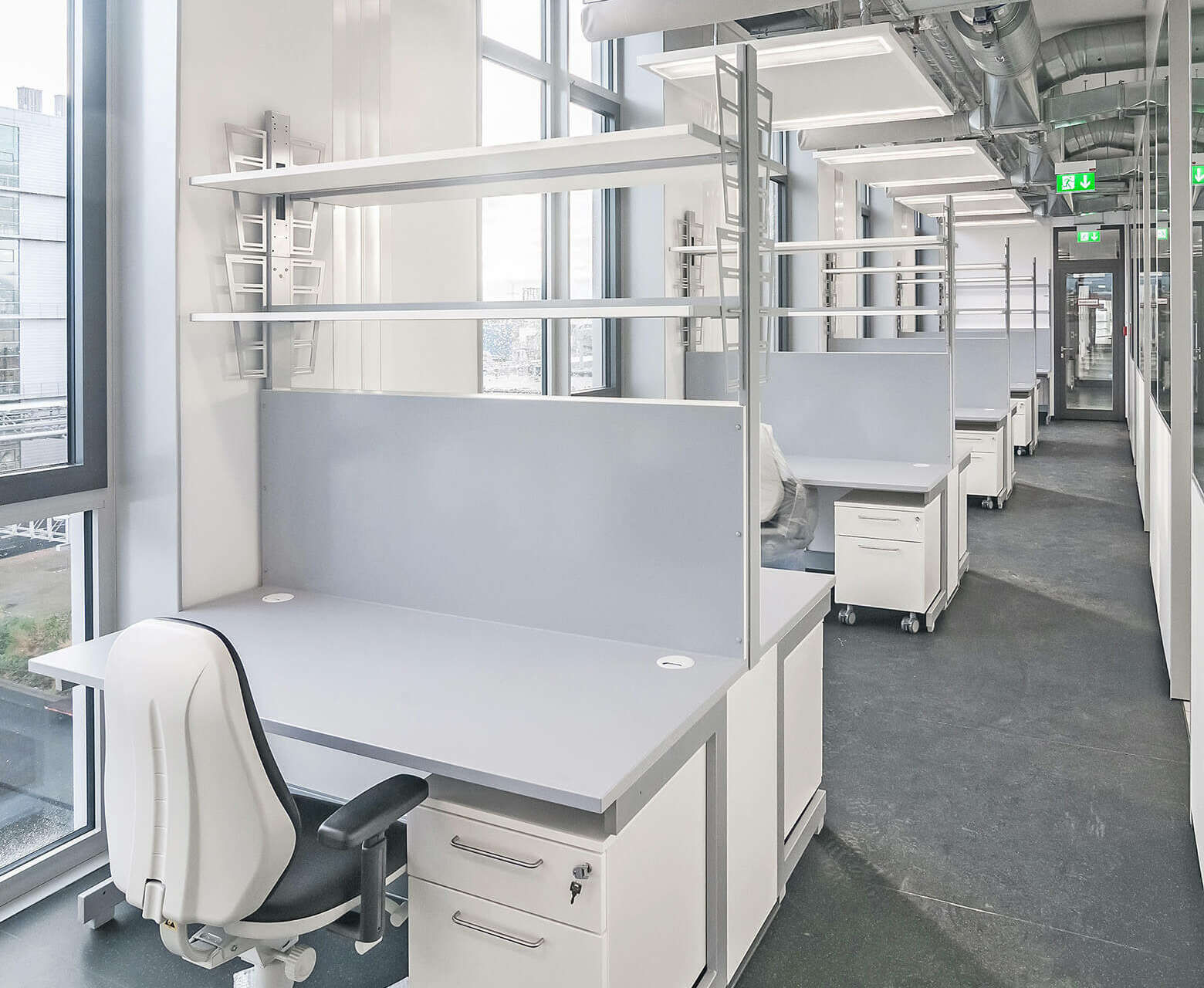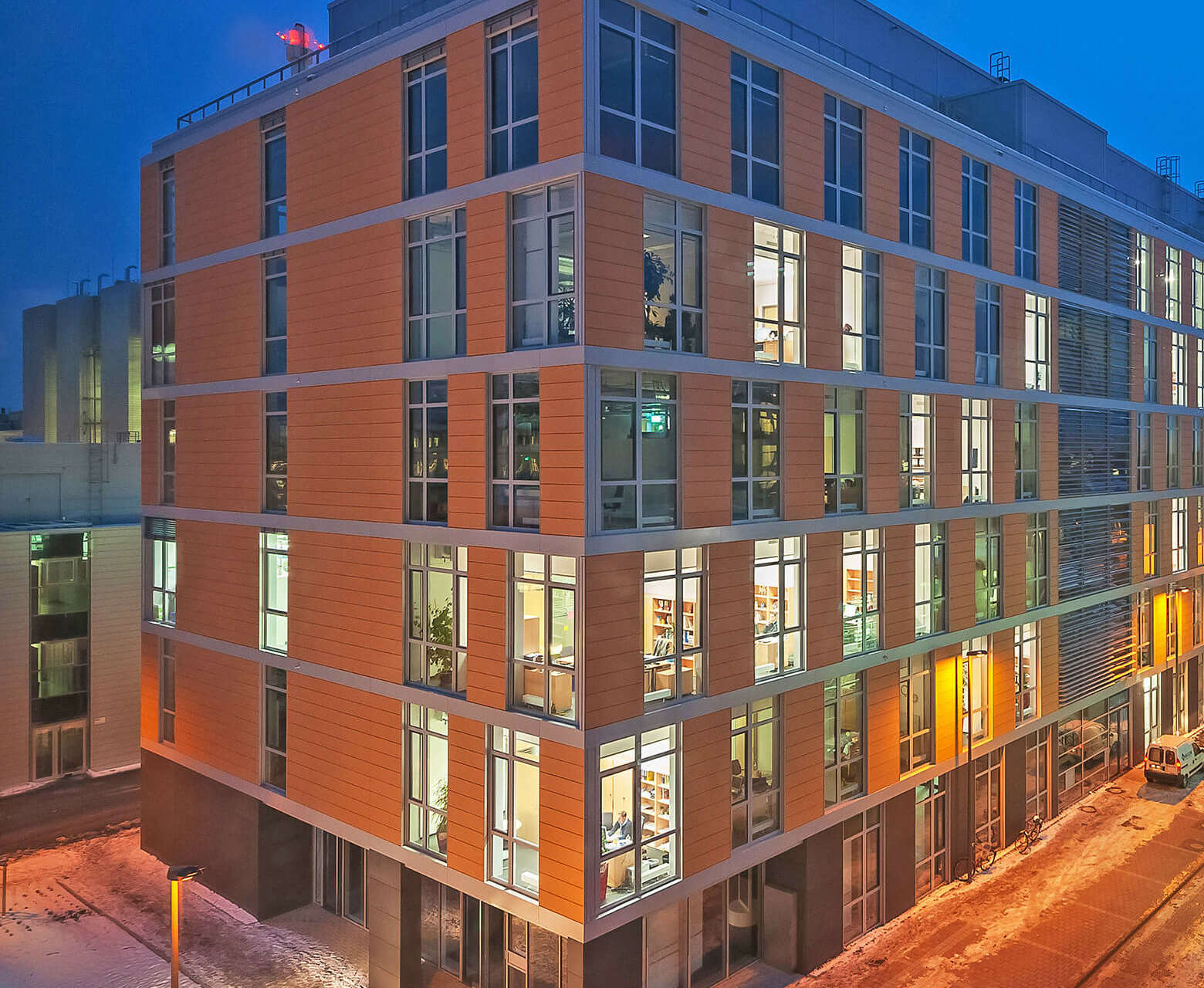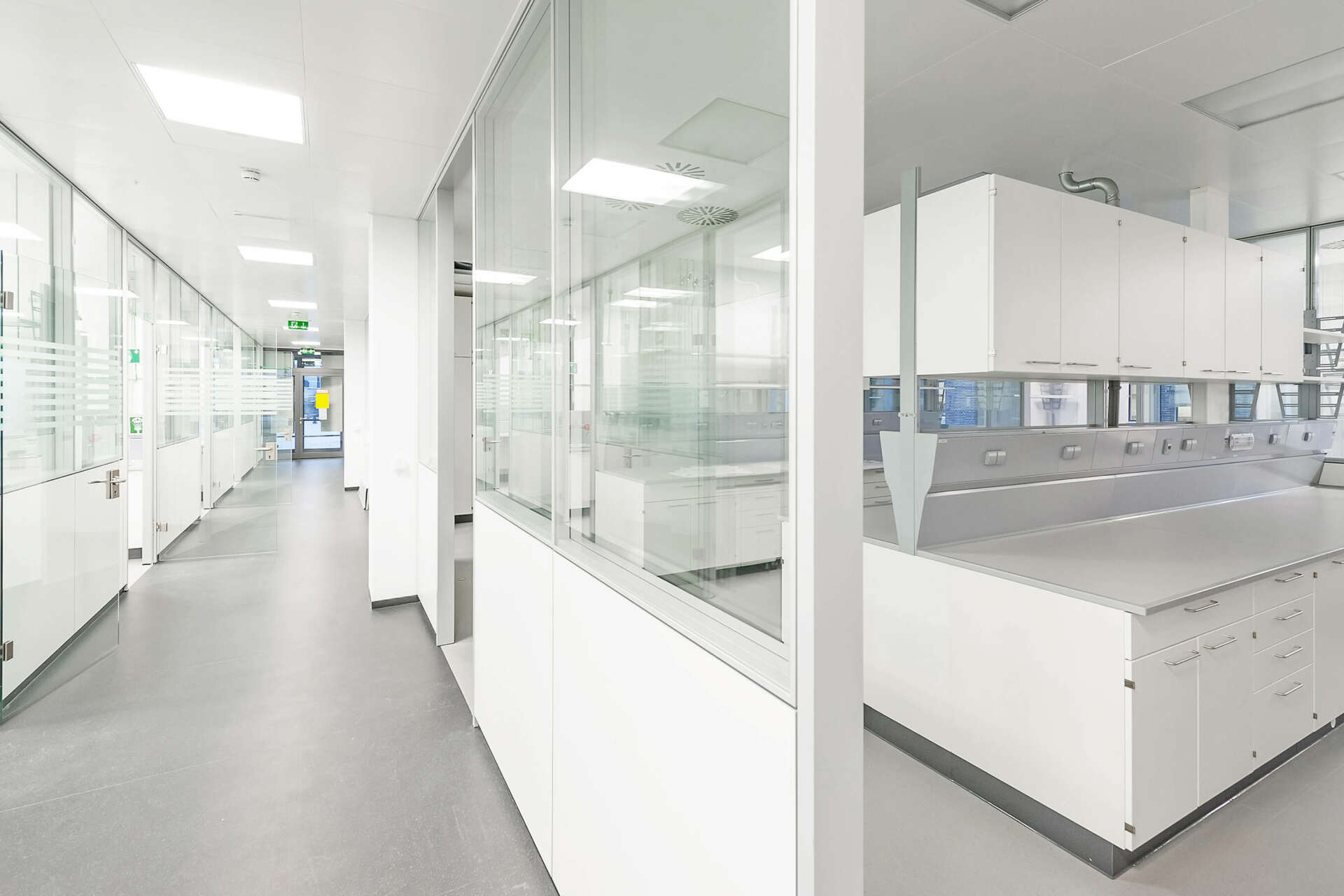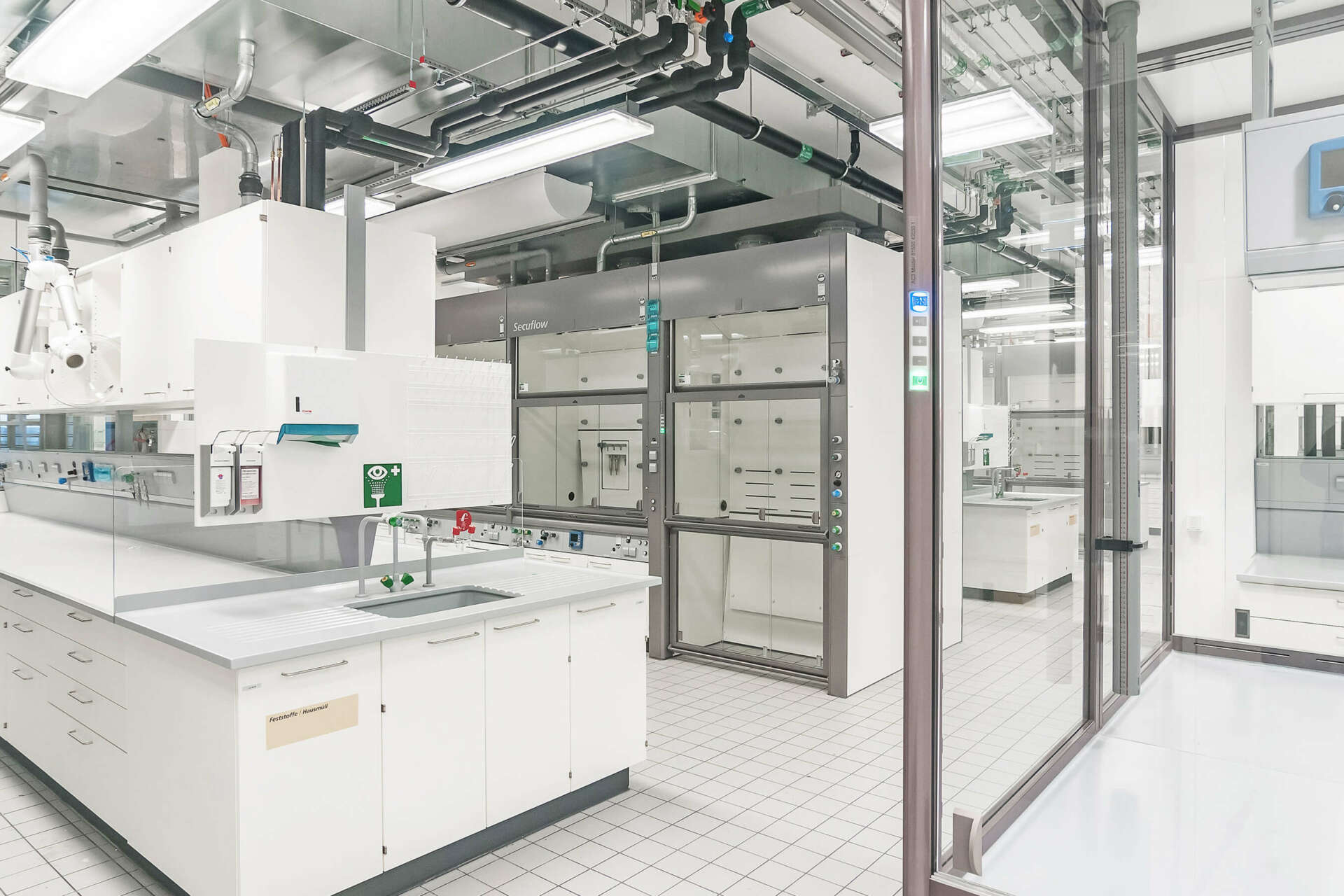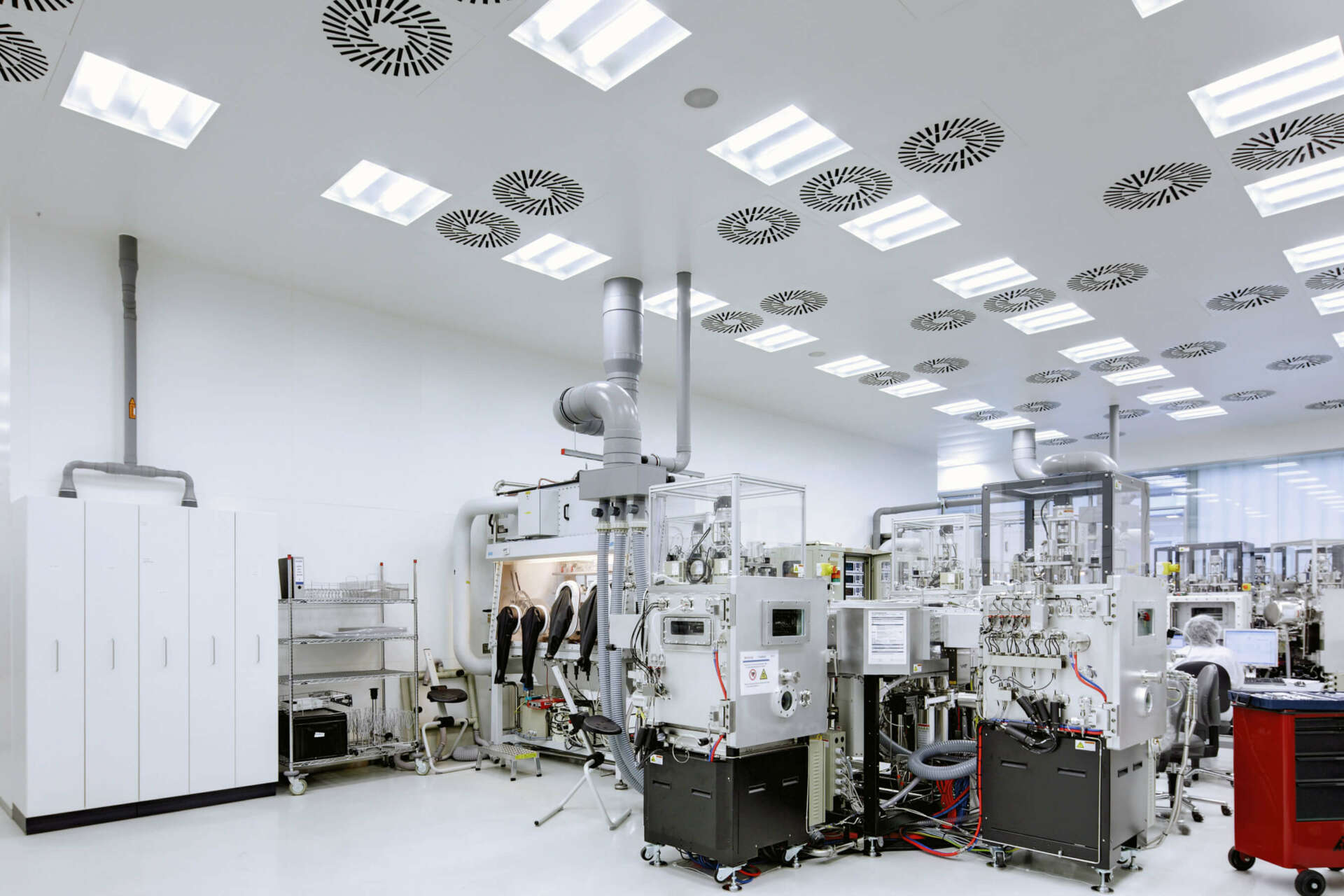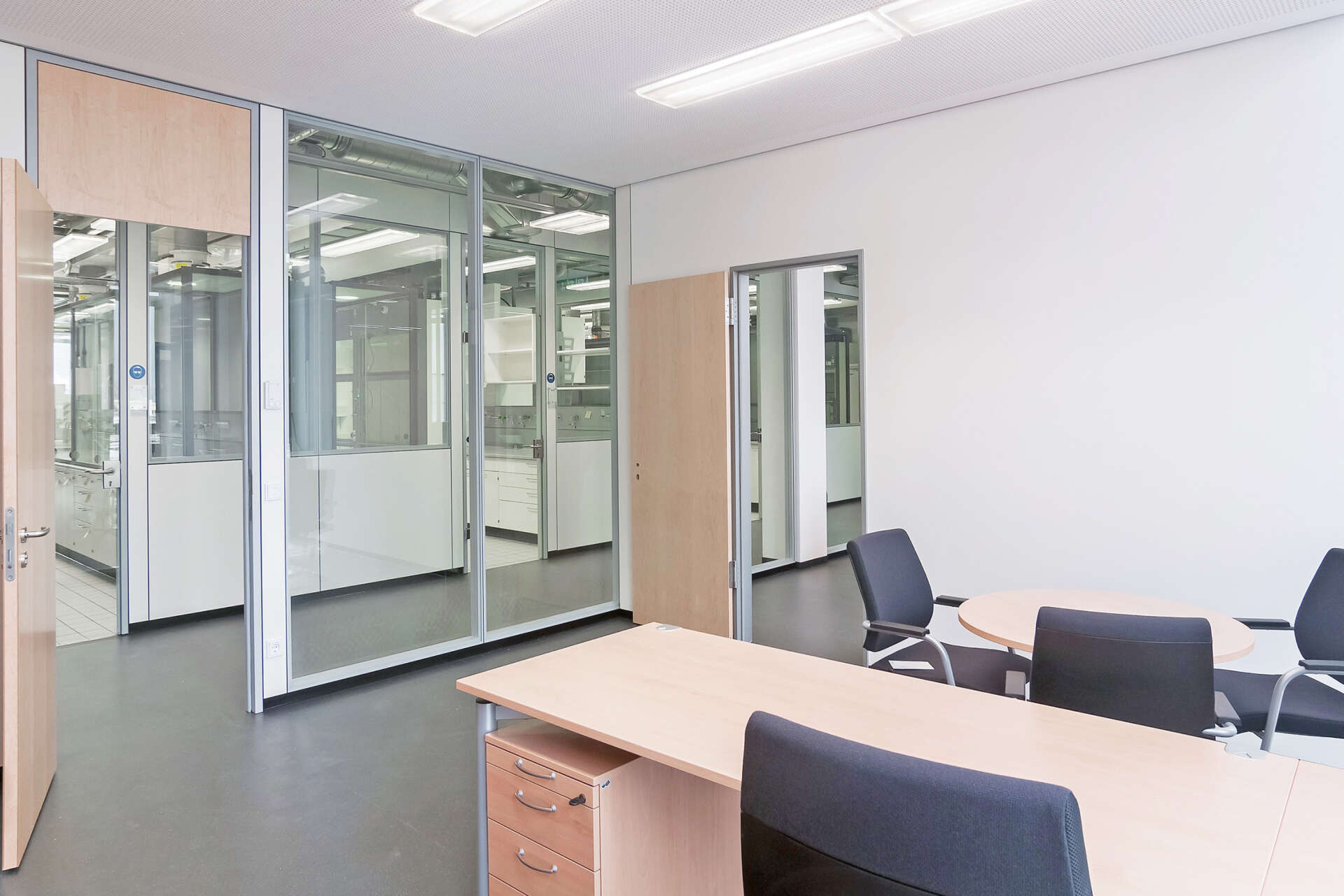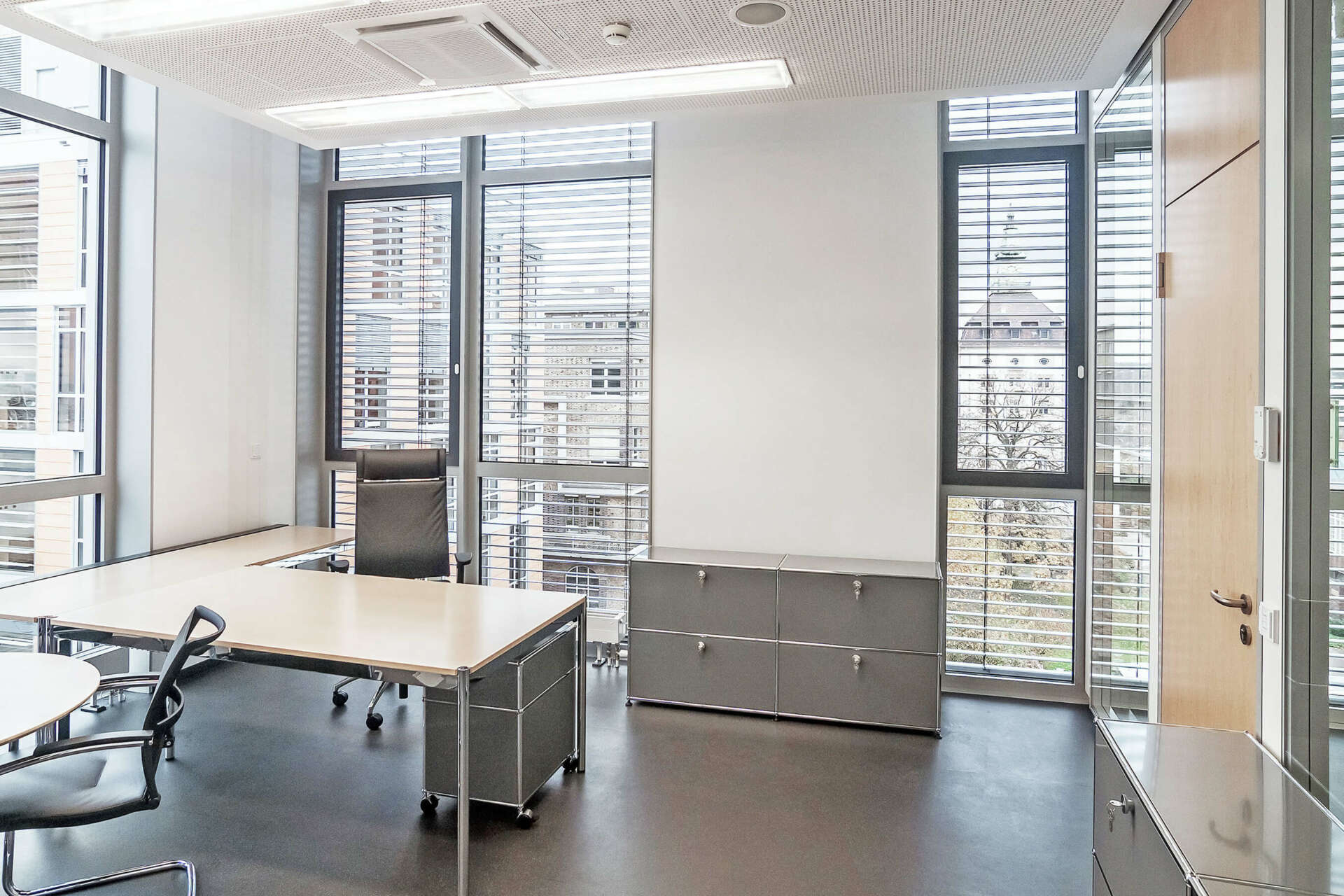Location
Darmstadt, DE
Services
Project Management, Architecture, Building Services, Laboratory Planning, Clean Room Planning
Client
Merck KGaA
Area
18.979 m² GFA | 85.468 m³ GV
Construction costs
EURO 45.8 million
Project term
June 2006 – September 2010
Competition
1st prize (2006)
The Material Research Center (MRC) is part of our master plan for Merck’s research campus at the Darmstadt site. It comprises two six-storey laboratory buildings and a clean-room technical center and now houses large parts of the research and development departments of the chemicals business sector, with around 340 members of staff who previously worked throughout the site and/or at several locations.
The research and development center creates a modern laboratory landscape: A communicative working environment with short travelling distances as well as light-flooded documentation and office zones have been created. Meeting points for exchanging information and meeting rooms can be reached directly throughout the premises. The workplace design was implemented with great importance placed on systematization, so that all workplaces could be flexibly used for altered research activities as well as other tasks. Where necessary, workplaces were specially adapted to certain tasks.

